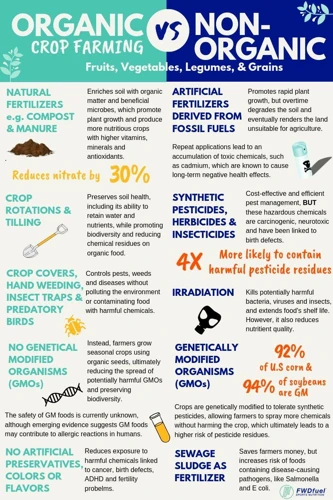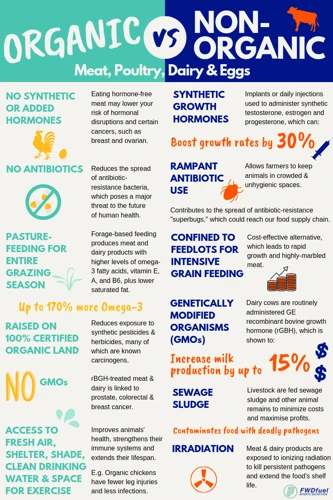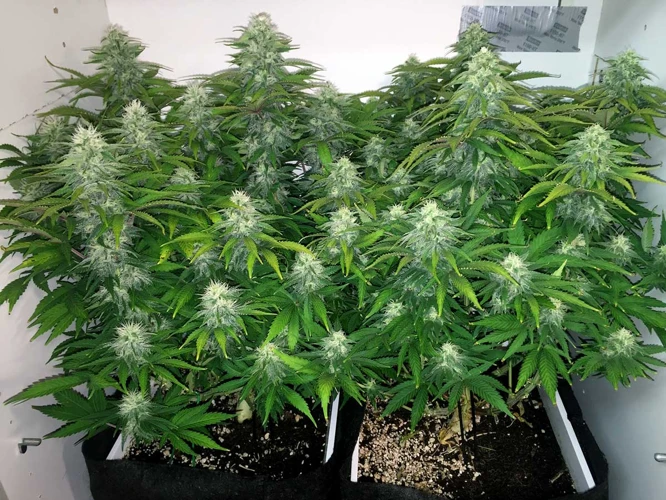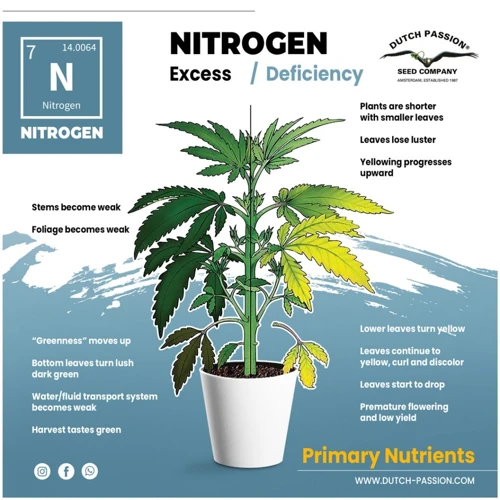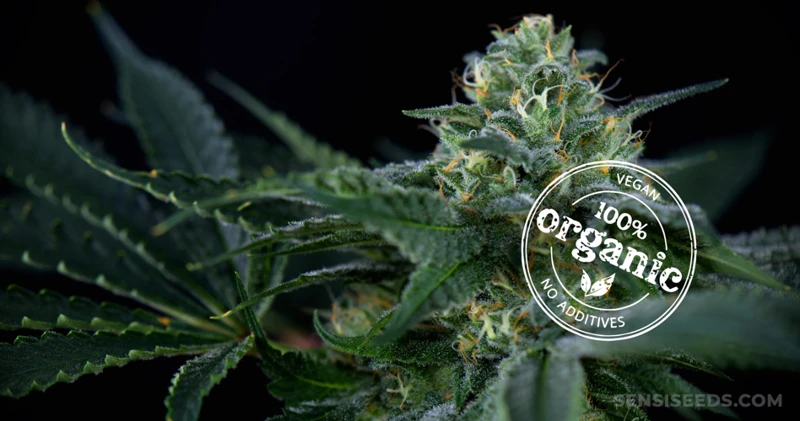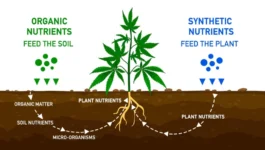
Organic vs Non-Organic Feeding for Growing Cannabis
When it comes to growing cannabis plants, one commonly debated topic is whether to use organic or non-organic feeding. Many growers are perplexed about which method is better for their plants. Both approaches have their benefits and drawbacks, and it ultimately comes down to personal preference as well as the specific needs of the plants. In this article, we will delve into the definitions, advantages, and disadvantages of each feeding method, compare their effects on growth rate, yield, nutrient content, and flavor, and provide step-by-step guides on how to implement both organic and non-organic feeding. We will also explore the possibility of a hybrid approach that combines the benefits of both methods. By the end of this article, you will have a comprehensive understanding of the organic vs non-organic feeding debate and be able to make informed decisions about how to feed your cannabis plants.
What is Organic Feeding?
Contents
Organic feeding is an approach to fertilizing plants that relies on naturally occurring compounds and processes rather than synthetic chemicals. Organic feeding involves using materials that are derived from living organisms, such as decomposed plant or animal matter, to provide essential nutrients to cannabis plants.
Definition: Simply put, organic feeding involves using natural inputs to nourish cannabis plants. This approach avoids the use of synthetic fertilizers and instead incorporates organic matter, such as compost, to provide essential nutrients.
Benefits: One of the main advantages of organic feeding is that it promotes soil health and fosters the growth of beneficial microorganisms that can improve nutrient uptake and overall plant health. Additionally, organic feeding can produce cannabis plants with improved flavor and aroma, as well as higher levels of essential oils and other compounds.
Drawbacks: However, organic feeding can be more labor-intensive and requires greater knowledge of soil chemistry and biology to be effective. It can also be more difficult to achieve precise nutrient ratios with organic inputs, which can lead to inconsistent growth rates and yields.
Organic feeding is a natural approach to fertilizing cannabis plants that can promote overall soil health and produce high-quality, flavorful buds. While it can require more effort and expertise to implement effectively, the benefits of organic feeding may be well worth the investment for some growers.
Definition
Defining the concepts of organic and non-organic feeding is crucial in understanding which approach is better for your cannabis plants. It’s important to distinguish between the two methods as they differ significantly in terms of their composition and how they impact the growth process. Let’s delve into the meaning of these terms and get a better understanding of what they entail.
Benefits
Organic feeding has several benefits that make it an attractive option for many cannabis growers:
- Reduced Chemical Exposure: One of the biggest benefits of organic feeding is that it helps reduce the amount of chemicals that the plants are exposed to. Organic fertilizers and soil amendments are made from natural sources, which means they are free from the harmful chemicals found in synthetic fertilizers. This can help produce healthier and safer plants, as well as reduce the risk of chemical buildup in the soil.
- Improved Soil Health: Organic feeding helps promote soil health by increasing its ability to retain water and nutrients. This is because organic fertilizers and amendments are broken down more slowly than synthetic ones, which allows them to release nutrients gradually over time. This gradual release of nutrients helps feed beneficial soil microorganisms, which in turn help improve soil structure, fertility, and overall health.
- Enhanced Flavor and Aroma: Organic feeding can help produce cannabis plants with enhanced flavor and aroma profiles. This is because organic nutrients and soil amendments can help produce more complex and nuanced terpene and cannabinoid profiles, which contribute to the plant’s unique taste and smell.
- Environmental Sustainability: Organic feeding is more sustainable and environmentally friendly than non-organic feeding. Organic fertilizers and soil amendments are made from natural sources and are biodegradable, which means they do not contribute to pollution or harm the environment. Additionally, organic farming practices help promote biodiversity and conserve natural resources.
These benefits make organic feeding an attractive option for growers who prioritize the health, quality, and sustainability of their cannabis crops.
Drawbacks
When it comes to organic feeding, there are a few drawbacks that need to be considered, despite the numerous benefits it provides. Here are some of the main downsides:
| Negative Aspect | Description |
|---|---|
| Slow Release of Nutrients | Organic fertilizers release nutrients slowly and can take longer to reach plant roots, which could lead to slower growth rates and smaller yields. |
| Inconsistent Nutrient Profile | The nutrient composition of organic matter varies from batch to batch, making it challenging to achieve precise nutrient ratios or formulas. |
| Potentially Contaminated | Organic materials, such as compost, might contain pathogens or toxins that could harm your cannabis plants. Using certified organic products or making your own compost from safe materials can reduce this risk. |
| Invasive Pests and Diseases | Organic growth practices may provide a more hospitable environment for pests and diseases to thrive. This can be mitigated through proper and consistent pest management practices. |
Despite these drawbacks, most growers who opt for organic feeding find that the benefits are worth the effort and investment.
What is Non-Organic Feeding?
Non-organic feeding, also known as synthetic or chemical feeding, involves using inorganic fertilizers and nutrients to feed cannabis plants. These nutrients are usually derived from mineral salts and other chemical compounds. Non-organic feeding systems are popular among growers because they offer more precise control over the nutrient content of the soil and water.
Definition: Non-organic feeding systems rely on synthetic, inorganic nutrients to feed cannabis plants. These nutrients are usually derived from mineral salts and other chemical compounds.
Benefits: One of the main benefits of non-organic feeding is its precision. Growers can fine-tune the nutrient profile of their plants to achieve optimal growth and yield. Non-organic feeding systems are also generally cheaper than organic systems. Additionally, synthetic fertilizers tend to dissolve more easily in water, making them easier to use.
Drawbacks: There are several drawbacks to non-organic feeding systems. Synthetic fertilizers can easily build up in the soil and water, leading to toxic levels of chemicals that can harm beneficial microorganisms and other organisms. Overuse of synthetic fertilizers can cause the soil to become too acidic or alkaline, leading to nutrient deficiencies in plants. Additionally, non-organic feeding systems tend to degrade soil quality over time, which can affect long-term plant health.
Non-organic feeding systems are popular among growers who want precise control over their nutrient profiles and who are willing to take the risk of potentially harmful chemical buildup. However, there are many drawbacks to chemical feeding that should be carefully considered before deciding whether it is the right choice for your cannabis plants.
Definition
When it comes to the discussion of organic vs non-organic feeding for cannabis plants, it’s important to start by defining what each method entails. Clarifying what exactly organic and non-organic feeding means is crucial for understanding the potential benefits and drawbacks of both approaches. So, let’s dive into the definitions of these two terms and explore their significance.
Benefits
Organic feeding has several benefits that make it an attractive option for those looking to cultivate cannabis plants. Some of these benefits include:
- Reduced chemical exposure: Organic feeding eliminates the use of synthetic pesticides and fertilizers, which reduces exposure to potentially harmful chemicals. This makes it a safer option for both the grower and the consumer.
- Improved soil health: By using natural amendments like compost and worm castings, organic feeding improves soil health and promotes the growth of beneficial microorganisms. This leads to a healthier growing environment for the cannabis plants.
- Better taste and aroma: Many growers argue that cannabis plants grown using organic feeding methods have a better taste and aroma compared to those grown using synthetic nutrients. This may be due to the presence of natural compounds and flavors in the organic amendments.
- Sustainable and eco-friendly: Organic feeding is a sustainable and eco-friendly method of growing cannabis plants since it relies on natural resources and reduces waste. This makes it a more environmentally conscious option.
- Cost-effective: While the upfront costs of organic amendments and soil may be higher, over time organic feeding can be a cost-effective method since it requires less ongoing investment in synthetic nutrients and pest control solutions.
These benefits make organic feeding a popular choice for those looking to grow high-quality cannabis plants in a sustainable and natural way.
Drawbacks
When it comes to organic feeding, there are a few drawbacks to consider. These include:
| Drawback | Description |
| Slow Release of Nutrients | Organic soil amendments can take a longer period of time to break down in the soil and become available to the plant. |
| Difficulty in Maintaining Nutrient Balance | It can be challenging to determine the right amount of nutrients to include in the soil for optimal plant growth, which can lead to deficiencies or toxicity. |
| Increased Risk of Pests and Diseases | Organic soil amendments can sometimes attract pests and diseases, which can be harmful to plants. |
| Higher Cost | Organic fertilizers tend to be more expensive than non-organic fertilizers, which can lead to higher overall costs for growing cannabis plants. |
Despite these drawbacks, many growers are still drawn to organic feeding methods for their potential benefits in terms of plant quality and environmental sustainability.
Which is Better for Cannabis Plants?
When it comes to choosing between organic and non-organic feeding, cannabis growers often find themselves at a loss. While both approaches have their benefits and drawbacks, understanding their impact on growth rate and yield, nutrient content, and flavor and quality can help you to make an informed decision that best suits your growing goals and preferences.
Growth Rate and Yield are arguably the most crucial factors for cannabis growers, given how important they are in determining profitability and overall success. According to some studies, organic feeding can result in slower growth rates and lower yields compared to non-organic feeding. The reason for this is that organic nutrients take longer to break down and become available to the plant, which slows down its growth cycle. Non-organic feeding, on the other hand, allows for faster nutrient uptake and a quicker growth cycle, leading to higher yields.
Nutrient Content is another critical aspect that growers should consider when deciding between organic and non-organic feeding. Organic nutrients contain a more diverse range of minerals and micronutrients, which provide natural and long-lasting benefits to the plant. Non-organic nutrients, while providing quick-fix solutions, may lack some of the beneficial micronutrients found in organic nutrients.
Flavor and Quality is where organic feeding shines. Because they are sourced from natural, chemical-free sources, organic nutrients tend to produce cannabis with a more potent and flavorful taste. Non-organic nutrients, while providing fast growth and higher yields, can leave residual chemicals that could impact the quality and taste of the cannabis flowers.
Ultimately, the decision to go for organic or non-organic feeding will depend on your growing goals, preferences and overall style. While non-organic feeding provides quick results, organic feeding ensures healthier and more flavorful plants. A combination of both approaches is also possible to achieve the best of both worlds.
Growth Rate and Yield
When it comes to growing cannabis plants, one of the primary concerns for any grower is the growth rate and yield of their plants. Both organic and non-organic feeding methods have been used to achieve desired results, but which method is best for promoting healthy growth and a high yield? Let’s explore the potential benefits and drawbacks of each method to gain a better understanding of how they impact a plant’s growth and yield.
Nutrient Content
When it comes to the nutrient content of organic and non-organic feeding, there are some key differences to consider. Let’s take a look at some of the nutrients that are typically found in each type of feeding.
| Nutrient | Organic Feeding | Non-Organic Feeding |
|---|---|---|
| Nitrogen (N) | Derived from organic matter such as bone meal, fish meal, and compost | Derived from synthetic sources such as ammonium nitrate and urea |
| Phosphorus (P) | Derived from organic matter such as bone meal, rock phosphate, and bat guano | Derived from synthetic sources such as monocalcium phosphate and superphosphate |
| Potassium (K) | Derived from organic matter such as wood ash, kelp meal, and granite meal | Derived from synthetic sources such as potassium chloride and potassium sulfate |
| Calcium (Ca) | Derived from organic matter such as dolomite lime, eggshells, and gypsum | Derived from synthetic sources such as calcium nitrate and calcium chloride |
| Magnesium (Mg) | Derived from organic matter such as epsom salt and dolomite lime | Derived from synthetic sources such as magnesium sulfate and magnesium oxide |
As you can see, organic feeding relies on naturally occurring organic matter to provide essential nutrients for plant growth, whereas non-organic feeding uses synthetic sources to achieve the same goal. While both methods can be effective, there are some important differences to keep in mind when it comes to nutrient content. Additionally, it’s worth noting that soil health and microbial activity can also impact the availability and uptake of nutrients by plants, regardless of whether they are organic or non-organic.
Flavor and Quality
One of the most significant differences between organic and non-organic feeding is in the flavor and quality of the resulting cannabis buds. When grown using organic methods, cannabis plants tend to produce a more natural and complex flavor profile, whereas non-organic methods may result in a less complex and potentially chemical taste.
This is because organic nutrients are typically derived from natural sources and contain a diverse range of micronutrients and beneficial bacteria that can enhance the taste and aroma of the plant. On the other hand, synthetic fertilizers used in non-organic methods may only contain a few macronutrients, often leading to a simpler flavour profile.
Additionally, organic methods may promote the production of terpenes, the aromatic oils that give cannabis its distinctive smell and flavour. Terpenes are produced by the plant as a natural defense mechanism against pests and environmental stressors, so any stress on the plant caused by synthetic fertilizers may lead to a lower terpene content in the resulting buds.
In fact, research has shown that organic methods can produce cannabis that is higher in both terpenes and cannabinoids, the chemical compounds responsible for the plant’s medicinal effects. A study conducted by the Department of Plant, Soil and Microbial Sciences at Michigan State University found that organically grown cannabis contained significantly higher levels of THC and CBD compared to non-organic methods.
It is important to note, however, that the flavor and quality of the cannabis ultimately depend on a variety of factors, such as the strain, growing conditions, and harvesting methods. While organic feeding can provide a significant advantage in this aspect, it is not a guarantee of superior taste and quality.
Below is a table summarizing the key differences in flavor and quality between organic and non-organic feeding.
| Flavor and Quality | Organic Feeding | Non-Organic Feeding |
|---|---|---|
| Taste | More complex and natural | Less complex, potentially chemical |
| Terpene Content | Promotes production | Potentially lower due to synthetic fertilizers |
| Cannabinoid Content | Higher levels of THC and CBD | Potentially lower due to synthetic fertilizers |
How to Implement Organic Feeding
Implementing organic feeding for your cannabis plants involves several steps that require careful planning and execution. Here are some of the key steps you can take to ensure that your organic feeding system is effective and reliable:
Selecting Soil and Amendments: The first step in implementing organic feeding involves selecting the right type of soil and amendments. Organic growers often prefer soil that is rich in organic matter, such as worm castings or compost, as it can provide a wealth of nutrients and beneficial microorganisms that can be beneficial for plant growth. Additionally, organic amendments like bone meal, kelp meal, and bat guano can be added to the soil to provide an additional boost of nutrients.
Making Compost Tea: Compost tea is a powerful liquid fertilizer that is made from a combination of water, compost, and other organic additives. To make compost tea, simply mix compost and water together in a bucket and let it sit for a few days, stirring occasionally. Once the mixture has brewed for a sufficient period, strain out the solids and use the remaining liquid as a fertilizer for your plants.
Using Worm Castings: Worm castings are a rich source of organic matter and nutrients, making them an excellent addition to any organic feeding system. To use worm castings, simply mix them into your soil or apply them as a top dressing around the base of your plants.
Implementing organic feeding can be a powerful way to promote healthy cannabis growth and improve the quality of your buds. However, it is important to carefully select your soil and amendments, make compost tea, and use worm castings effectively to ensure the best possible results.
Selecting Soil and Amendments
When it comes to implementing organic feeding for your cannabis plants, the selection of soil and amendments can seem like a daunting task. The right choice will provide essential nutrients, while the wrong selection may hinder plant growth and yield. It’s important to carefully consider the options and choose soil and amendments that support healthy plant growth. In this section, we’ll explore some tips and tricks for selecting the best soil and amendments for organic feeding. So, grab your gardening gloves and shovel – it’s time to get dirty!
Making Compost Tea
Compost tea is a powerful tool that can enhance your cannabis plants’ growth and overall health. Here are the steps to making compost tea:
- Choose the right ingredients: The quality of compost tea depends on the ingredients used. You can use compost or vermicompost as the base, and add in other ingredients such as molasses, fish emulsion, kelp meal, and bat guano. Make sure your ingredients are of high quality and free of any harmful chemicals or pesticides.
- Brew the tea: Fill a muslin bag with compost and suspend it in a bucket of dechlorinated water. Add in the other ingredients and stir well. Cover the bucket and let it sit for 24-48 hours, stirring occasionally.
- Strain and apply: After 24-48 hours, remove the muslin bag and strain the liquid to remove any solids. Dilute the compost tea with water to the desired strength, and apply it to your cannabis plants’ roots as a soil drench or foliar spray.
Compost tea can provide your plants with a rich source of beneficial microbes and nutrients that can improve soil structure and increase nutrient uptake. The beneficial bacteria and fungi in compost tea can help protect against pests and diseases, leading to healthier and stronger plants. Incorporating compost tea into your organic feeding regimen can help boost the overall health and yield of your cannabis plants.
Using Worm Castings
Worm castings are a natural and effective way to provide organic nutrients to your cannabis plants. They are a rich source of nitrogen and other important micronutrients that help in the growth and development of your plants.
What are worm castings?
Worm castings are the digested organic matter excreted by worms. They are rich in beneficial microorganisms, which help in improving soil quality, aeration, and water holding capacity. Worm castings do not have any synthetic or chemical additives, making them an excellent organic alternative to chemical fertilizers.
Benefits of using worm castings
Using worm castings provides multiple benefits to your cannabis plants. Some of the benefits of using worm castings are:
| Benefits of using worm castings |
|---|
| They contain high concentrations of nitrogen, which helps in promoting vegetative growth |
| They are rich in trace minerals like calcium, magnesium, and iron, which aid in the healthy growth of plants |
| They contain beneficial microorganisms that help in breaking down organic matter, releasing nutrients that are easily available to plants |
| They improve soil structure and porosity, allowing for better drainage, aeration, and water retention |
| They help in enhancing the flavor and aroma of your cannabis plants |
How to use worm castings
Using worm castings is easy and can be integrated into your organic feeding routine. Here are some ways to use worm castings:
- Mix the worm castings with the soil at the time of planting. This will provide a slow-release of nutrients as the plants grow.
- Add worm castings to your compost pile. This will increase the microbial activity and nutrient content of your compost.
- Mix the worm castings with water to make a nutrient-rich tea that you can use to water your plants. This method provides a quick boost of nutrients to your plants.
Conclusion
Worm castings are an excellent organic alternative to chemical fertilizers. They provide numerous benefits to your cannabis plants, improve soil structure, and enhance the flavor and aroma of your crop. By incorporating worm castings into your feeding routine, you can provide your plants with the nutrients they need to grow healthy and strong.
How to Implement Non-Organic Feeding
When it comes to implementing non-organic feeding for your cannabis plants, there are several key steps to keep in mind. One of the primary considerations when using non-organic methods is selecting the right nutrients.
Selecting Nutrients: Non-organic feeding relies on synthetic or chemical fertilizers to provide plants with the necessary nutrients. There are many different options on the market, but it’s important to choose a product that is specifically formulated for cannabis plants. Look for options that are high in nitrogen, phosphorus, and potassium, as these are important for healthy growth and development.
Preparing Nutrient Solution: Once you have selected your fertilizer, it’s important to mix it properly to create a nutrient solution that is appropriate for your plants. Follow the manufacturer’s instructions carefully, as the exact ratios and concentrations can vary depending on the product. You’ll also want to make sure that the pH levels are within an appropriate range, as cannabis plants prefer slightly acidic soil.
Using Synthetic Additives: In addition to basic fertilizers, non-organic feeding often relies on synthetic additives to improve plant growth and development. These can include things like growth enhancers, root stimulators, and bloom boosters. It’s important to follow the instructions carefully when using these products, as overuse can harm your plants.
While non-organic feeding can be highly effective, there are some potential drawbacks to consider as well. One of the primary concerns is the risk of nutrient burn, which can occur when plants are given too many nutrients or when the solution is mixed improperly. It’s also important to note that non-organic methods can have a negative impact on the environment, as they rely on synthetic chemicals that can be harmful to ecosystems and wildlife.
Implementing non-organic feeding for your cannabis plants can be an effective way to promote healthy growth and development. However, it’s important to approach the process with caution and to carefully follow instructions to avoid potential pitfalls.
Selecting Nutrients
When it comes to non-organic feeding, selecting the right nutrients can be a perplexing task. There are so many options available in the market, each with their own unique benefits and drawbacks. It’s important to understand which nutrients are essential for your cannabis plants and how to choose the right ones to achieve the desired growth, yield, and potency. In this section, we will explore the factors to consider when selecting nutrients for your non-organic feeding method. So, let’s dive in and discover the key to successful nutrient selection for your cannabis plants.
Preparing Nutrient Solution
When it comes to preparing a nutrient solution for non-organic feeding, there are several steps to follow.
1. First, determine the specific nutrients needed for the particular stage of growth. This can be done by referencing a nutrient feeding chart specific to the nutrient line being used.
2. Next, measure out the appropriate amount of each nutrient as indicated on the feeding chart. This can be done using a digital scale or measuring cups and spoons.
3. Fill a clean container with water, making sure to use water that is free of chlorine and other contaminants.
4. Add each nutrient to the water one at a time, stirring well after each addition to ensure it is fully dissolved. Pay close attention to the order in which the nutrients are added, as some may react with each other and cause precipitation or other issues.
5. Once all nutrients have been added and dissolved, adjust the pH of the solution to the appropriate range using pH up or down. This step is crucial, as the plant can only absorb nutrients within a certain pH range.
6. Finally, check the electrical conductivity (EC) of the solution using a meter to ensure it falls within the appropriate range for the stage of growth. Adjust if necessary by diluting with water or adding more nutrients.
It is important to always follow the feeding chart and be cautious not to overfeed, as this can cause nutrient burn and other issues. A nutrient solution that is too strong can also negatively impact the flavor and quality of the final product.
Using Synthetic Additives
When it comes to non-organic feeding for cannabis plants, one method is to use synthetic additives to provide nutrients. These are manufactured chemical compounds that are designed to mimic the composition of natural nutrients. Here are some important factors to consider before using synthetic additives:
- Cost: Synthetic additives can be less expensive than organic alternatives. However, the cost can vary depending on the specific brand and nutrient composition.
- Ease of Use: Synthetic additives are easy to use and can be easily mixed with water. They do not require the creation of compost or other organic materials.
- Precision: Synthetic additives can provide precise nutrient ratios and concentrations, allowing for more controlled feeding. They are also readily available in pre-mixed formulations.
- Potential Risks: While synthetic additives can be effective, they come with some potential risks. Overuse can lead to nutrient imbalances, toxicity, and other problems. Additionally, synthetic additives can have negative impacts on the environment, as they are often derived from non-renewable resources.
Ultimately, using synthetic additives is a personal choice that should be based on the specific needs of your cannabis plants, as well as your own preferences and priorities. It is important to recognize that non-organic feeding methods, including the use of synthetic additives, can have both benefits and drawbacks. As such, it is important to carefully consider your options before deciding on a feeding approach.
Combined Approach
One way to approach feeding your cannabis plants is to implement a combination of organic and non-organic methods. This can provide the benefits of both approaches while mitigating some of their drawbacks.
Mixing Organic and Non-Organic Nutrients
One option is to use a combination of organic and non-organic nutrients. This can allow you to provide your plants with a wide range of essential nutrients while also using some organic materials that can improve soil health and plant growth. For example, you can use a base nutrient solution containing non-organic fertilizers and supplements, and supplement it with organic amendments such as worm castings and compost tea.
Implementing a Hybrid System
Another option is to create a hybrid system that combines elements of both organic and non-organic methods. This can involve using a base nutrient solution and supplementing it with organic materials, but also incorporating synthetic additives such as boosters and enhancers. This can provide the flexibility to tailor your feeding regimen to the specific needs of your plants and achieve optimal growth, yield, and flavor.
It’s important to note that combining organic and non-organic methods requires careful attention to ensure that your plants are receiving the right nutrients in the right amounts at the right times. You may need to experiment with different feeding regimens, nutrient ratios, and schedules to find the optimal approach for your setup and growing conditions.
Conclusion
Ultimately, choosing between organic and non-organic feeding methods for your cannabis plants is a personal decision that depends on your growing goals, values, and resources. Both approaches have their pros and cons, and some growers may opt to combine them to take advantage of their respective benefits. Whatever method you choose, it’s important to pay close attention to your plants’ nutrient needs and adjust your feeding regimen accordingly to ensure healthy, vigorous growth and bountiful yields.
Mixing Organic and Non-Organic Nutrients
When it comes to feeding cannabis plants, some growers may find it challenging to decide between organic and non-organic methods. However, there is a third option that may offer the best of both worlds – a hybrid approach that utilizes both organic and synthetic nutrients. This approach can provide the benefits of organic feeding, such as improved flavor and quality, while also offering the precision and control of non-organic feeding. But how exactly does it work? Let’s explore the concept of mixing organic and non-organic nutrients and its potential advantages and drawbacks.
Implementing a Hybrid System
The implementation of a hybrid system can be a very effective way to combine the benefits of both organic and non-organic feeding. Here are some steps to follow when implementing a hybrid system:
- Assess the needs of your cannabis plants: Before creating a hybrid system, you must first determine the specific needs of your cannabis plants. This includes their growth rate, nutrient content, and overall health.
- Select the appropriate nutrients: Choose a combination of organic and non-organic nutrients that meet the specific needs of your plants. This may mean using organic soil and supplements in combination with non-organic fertilizers or vice versa.
- Create a feeding schedule: Establish a feeding schedule that alternates between organic and non-organic nutrients. This will help ensure that your plants receive a balanced diet and avoid any potential nutrient deficiencies.
- Monitor your plants: Regularly monitor the growth and health of your cannabis plants to ensure that they are responding well to the hybrid system. Adjust the feeding schedule as necessary to optimize growth and nutrient uptake.
It’s important to note that implementing a hybrid system can be more complex than using a strictly organic or non-organic feeding approach. However, for those who are willing to put in the extra effort, a hybrid system can often result in larger yields, better flavor, and improved overall plant health.
Conclusion
After exploring both organic and non-organic feeding methods for cannabis plants, it is difficult to come to a clear-cut conclusion as to which is better. Both methods have their own set of benefits and drawbacks.
The Final Verdict: Ultimately, the decision of whether to use organic or non-organic feeding for cannabis plants should be based on the individual grower’s preferences and values. One should consider factors such as environmental impact, personal health concerns, and desired flavor and quality of the end product.
Final Thoughts: However, it is important to note that both organic and non-organic methods can be effective if implemented correctly. It is also possible to use a combined approach, by mixing organic and non-organic techniques or implementing a hybrid system.
Regardless of the method chosen, it is crucial to properly research and educate oneself on the best practices for feeding cannabis plants. This includes understanding factors such as nutrient content, growth rate, and flavor and quality of the end product. By doing so, growers can ensure that their cannabis plants receive the best possible care and produce a high-quality yield.
The Final Verdict
After examining both organic and non-organic feeding methods for cannabis plants, it can be difficult to determine which approach is ultimately superior. Each method has its own benefits and drawbacks that should be considered based on individual circumstances and growing goals. However, based on a careful evaluation of the factors at play, a final verdict can be reached regarding which method may be better suited for most cannabis growers. Let’s delve into the conclusion and see what it reveals.
Final Thoughts
Deciding between organic and non-organic feeding for your cannabis plants depends on several factors. It is important to weigh the benefits and drawbacks of both methods to determine which option will work best for you.
Some final thoughts to consider:
- Organic feeding may take longer to show results, but can provide a more long-term and sustainable approach to cultivating healthy plants.
- Non-organic feeding may produce faster growth and higher yields, but can be more costly and potentially harmful to the environment.
- Incorporating both methods through a hybrid approach can allow for the advantages of both organic and non-organic feeding, while mitigating the shortcomings of either method.
- No matter which feeding method you choose, it is important to closely monitor your plants and adjust based on their specific needs.
- When making decisions about how to feed your cannabis plants, it is vital to stay informed and educated on the latest research and developments in the industry.
Remember, the ultimate goal is to cultivate healthy, high-quality cannabis, and choosing the right feeding method is just one aspect of achieving that goal.
Frequently Asked Questions
What are the benefits of organic feeding for cannabis plants?
Organic feeding provides a slower release of nutrients over time, leading to better soil structure and minimal runoff. Organic nutrients also improve the overall quality of the plants, resulting in better taste and aroma.
What are the drawbacks of organic feeding for cannabis plants?
Organic feeding can be expensive and requires careful management. The slow release of nutrients can also lead to slower growth and yield.
What are the benefits of non-organic feeding for cannabis plants?
Non-organic feeding provides quick and reliable results, making it a popular choice for commercial growers. Synthetic nutrients also allow for precise control of nutrient levels.
What are the drawbacks of non-organic feeding for cannabis plants?
Non-organic feeding can lead to nutrient burn and other problems, and may contribute to soil contamination. The use of synthetic additives can also affect the taste and quality of the plants.
Is one type of feeding better than the other for cannabis plants?
There is no definitive answer, as both organic and non-organic feeding have their own advantages and drawbacks. It is up to each individual grower to determine which approach is best for their specific needs and goals.
Can organic and non-organic feeding be used together?
Yes, it is possible to use a combination of organic and non-organic nutrients. This approach can provide the benefits of both types of feeding while minimizing the drawbacks.
What is compost tea and how is it used?
Compost tea is a liquid fertilizer created by steeping compost in water. It can be used as a soil drench, foliar spray, or added to the watering schedule as needed.
What are worm castings and how are they used?
Worm castings are a natural fertilizer created by the digestive process of worms. They can be added to soil or compost to improve nutrient content and soil structure.
What are synthetic additives and how are they used in non-organic feeding?
Synthetic additives are chemical nutrients or supplements that are added to the nutrient solution. They are carefully measured to provide precise levels of nutrients to the cannabis plants.
What is a hybrid feeding system?
A hybrid feeding system combines elements of both organic and non-organic feeding, with the goal of providing the benefits of both approaches while minimizing the drawbacks.

